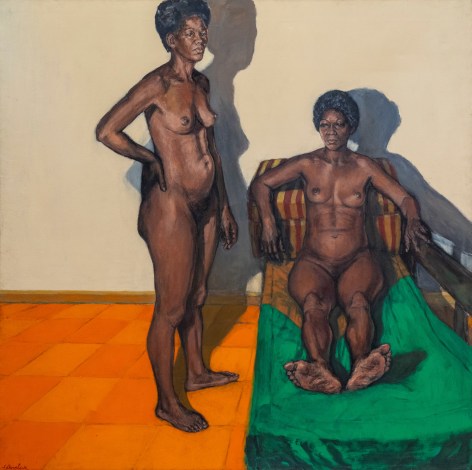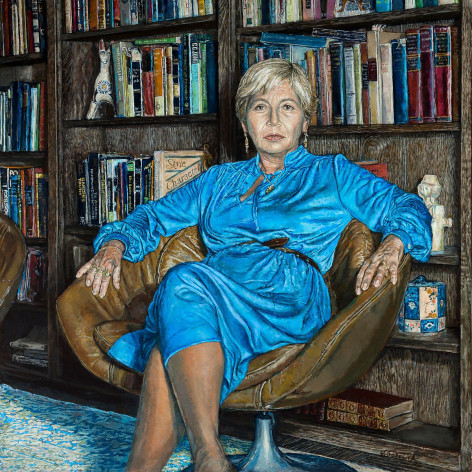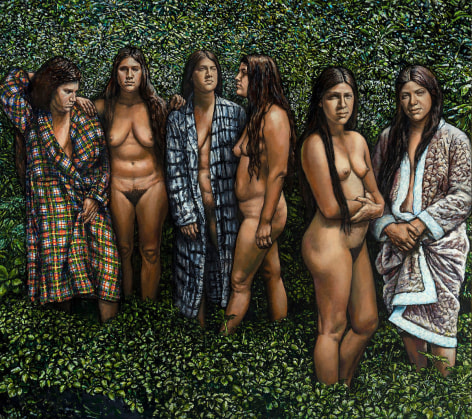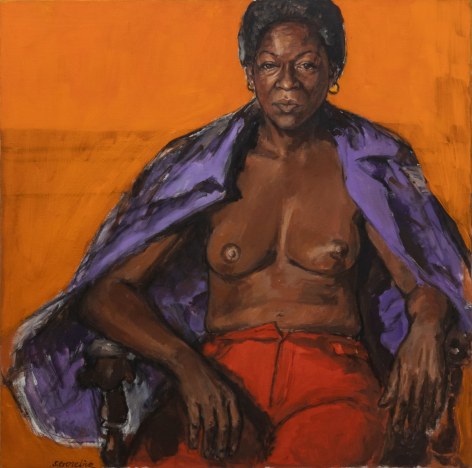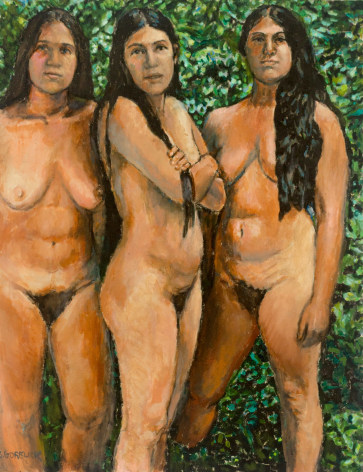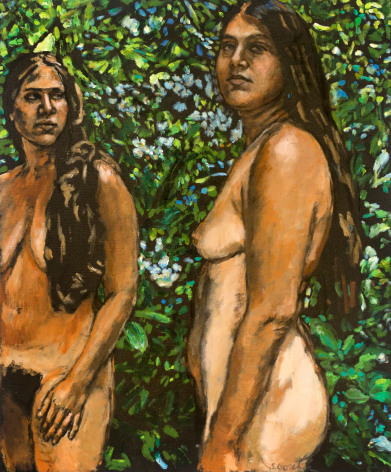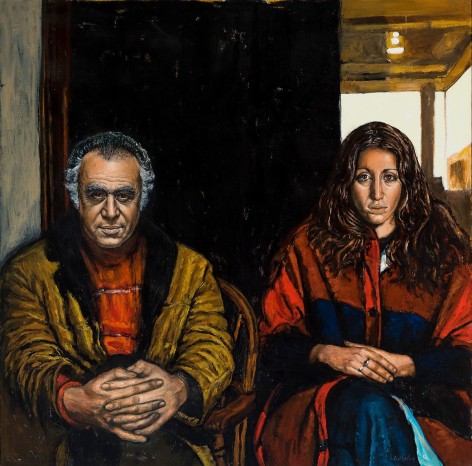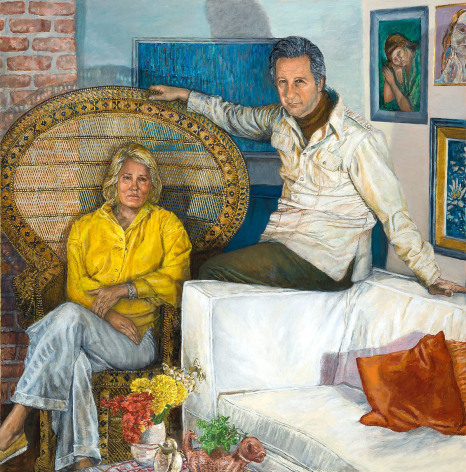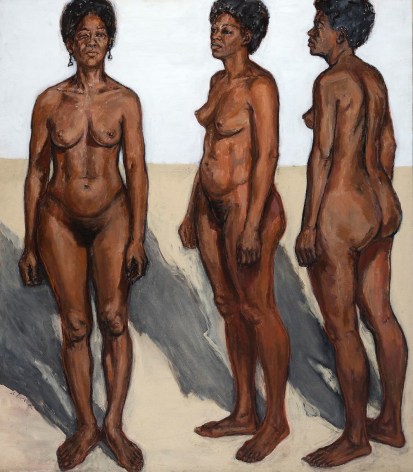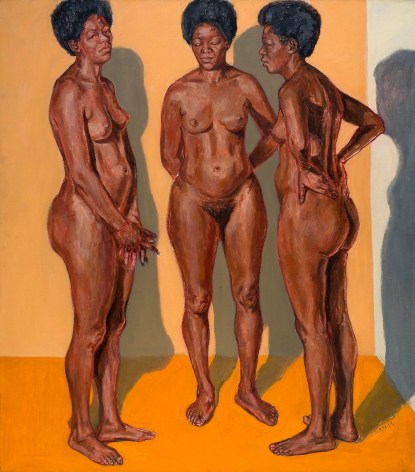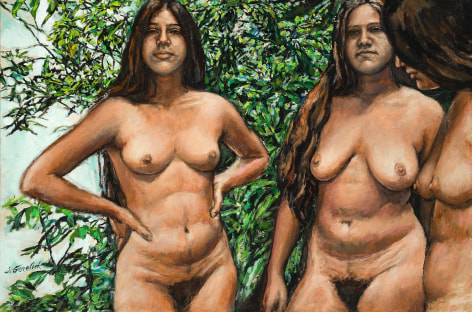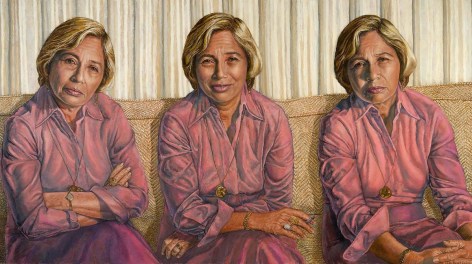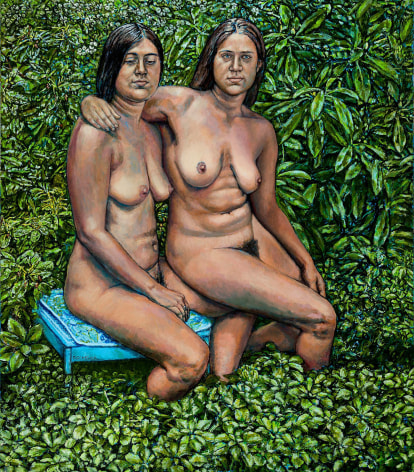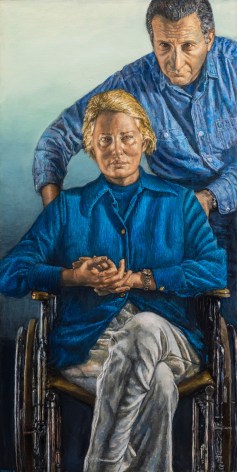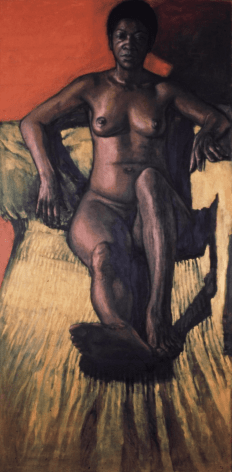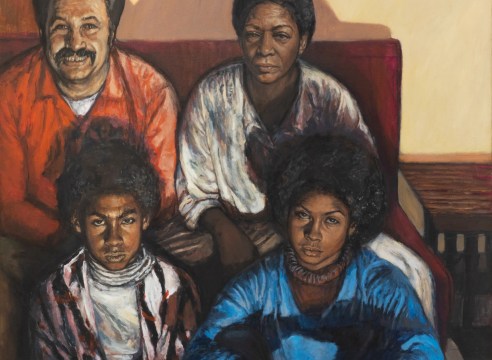
Shirley Gorelick: Family
Eric Firestone Gallery
4 Great Jones St., 3rd Floor | New York, NY
June 23 – July 29, 2022
Opening Reception: Thursday, June 23 | 6:00 – 8:00 PM
Eric Firestone Gallery is pleased to announce a solo exhibition of work by Shirley Gorelick. On view will be paintings from the late 1960s through the early 1980s. Gorelick (1924-2000) was an American artist who worked in a realist mode, creating empathic, psychological portraiture, often on a large scale. This is the first major exhibition of Gorelick’s work in New York City since her lifetime. It will showcase Gorelick’s uniquely female lens, her attention to subjects not traditionally heroized in large-scale portraiture, and her relational viewpoint: showing families, couples, and siblings, and their larger place in society.
Major paintings by Shirley Gorelick are currently on view at the Baltimore Museum of Art, and the Minneapolis Institute of Art. The works in the exhibition at Eric Firestone Gallery are from related series. This exhibition will focus on five families who were repeated subjects. Gorelick depicted them in various configurations, from solo portraits to complete family groupings. The five families include the Ourlichts, the Barnetts, and the Bensons.
The Ourlichts (Libby and Boris Ourlicht) were a bi-racial couple with two children. The Barnetts (Tess Forrest and Joseph Barnett) were both psychoanalysts. Gunny Benson was a wheelchair-user, often shown with her husband, Lee Benson. The couples were middle-aged at the time Gorelick painted this series of portraits in the exhibition, but the Bensons were some of Gorelick’s oldest friends and there are also paintings of them dating as early as 1946–47.
Gorelick brought a sympathetic sense of understanding to these portraits that is palpable in her brushwork, compositions, and attention to interpersonal relationships. Her representations of the adolescent girls in “Three Sisters II: Westchester Gauguin,” 1974-76, convey both the awkwardness and naturalness with which they hold their bodies. They are not sexualized; their skin and the plumpness of their bodies is felt. In representing Gunny Benson in a wheelchair, her husband forms a protective stance. Gorelick’s peer, artist Sylvia Sleigh wrote about the painting “Gunny and Lee,” saying, “I think perhaps it is a particularly feminine gift to be good at showing personal relationships as gesture, as composition…. The delicacy of color and tone, the soft glowing background, imply the artist’s sympathy with the afflicted couple.”
Libby Ourlicht was a muse for Gorelick. She was Gorelick’s subject in nude figure paintings, portraits, as well as paintings seated with her husband and adolescent children. A figure painting showing two views of Libby: “Double Libby II,” (1971-72), was recently acquired by the Baltimore Museum of Art.
Born in Brooklyn, New York, Gorelick studied art as a young person with Chaim Gross, Moses Soyer, and Raphael Soyer. She received her BA from Brooklyn College, where she studied with Serge Chermayeff. After receiving her MA at Teachers College, she briefly attended the Hans Hofmann School of Art in Provincetown, Massachusetts.
Gorelick’s early work was figurative, but stylistically influenced by the legacy of Cubism and Abstract Expressionism. In her growing desire to realize a psychological depiction of the subject, she shifted into a higher degree of realism. Gorelick worked on her large-scale acrylic paintings from a combination of direct observation and photography. She also made silverpoint drawings and intaglio prints.
In the context of the feminist movement, Gorelick became involved with artist-run, women’s cooperative galleries. In 1973, she became a founding member of Central Hall Artists Gallery, an all-women artist-run gallery in Port Washington, New York. Between 1975 and 1986, she had six solo exhibitions at SOHO20 and participated in numerous group shows. In 1976, Gorelick painted a nine-foot portrait of Frida Kahlo for “The Sister Chapel,” a feminist collaboration by thirteen artists which celebrated female role models and premiered its installation at P.S. 1 in Long Island City.
Gorelick is represented in the collections including including Minneapolis Institute of Art, Minneapolis, MN; the National Museum of Women in the Arts, Washington DC; Provincetown Art Association and Museum, Provincetown, MA; Baltimore Museum of Art, Baltimore, MD; and the Brooklyn Museum, Brooklyn, Brooklyn, NY.

